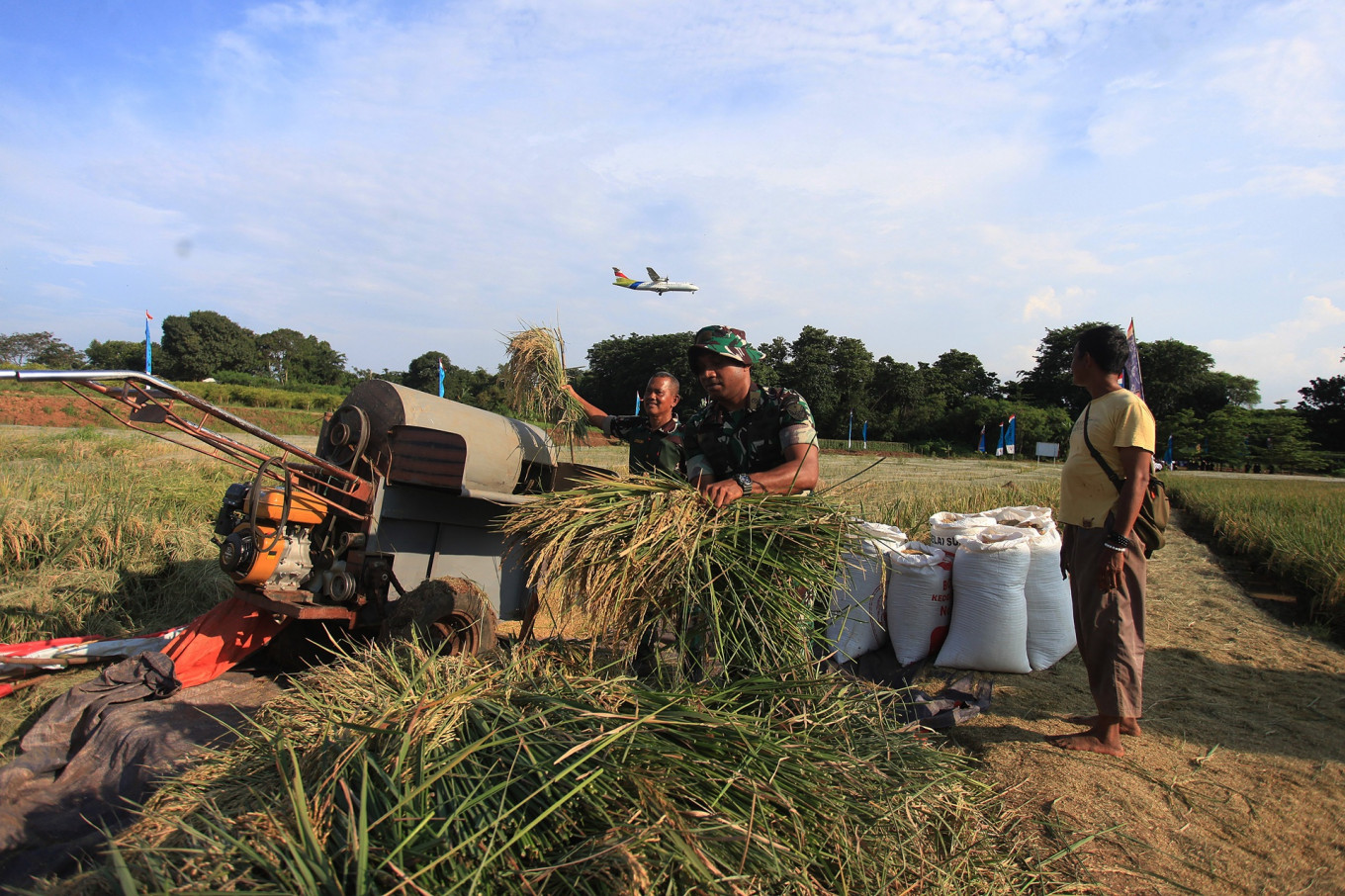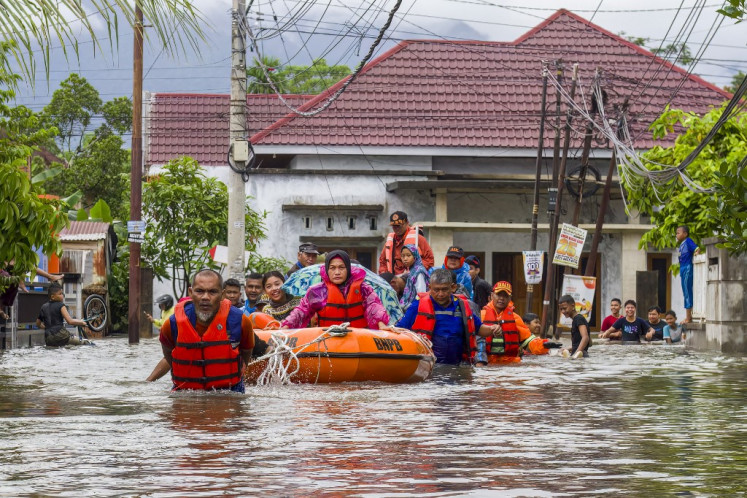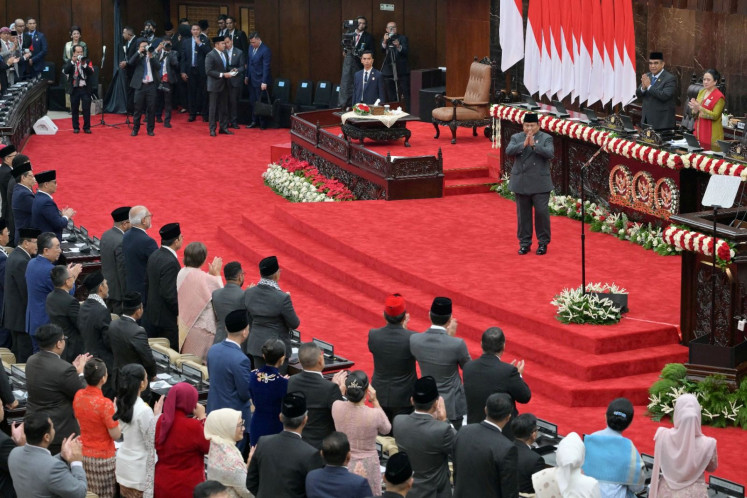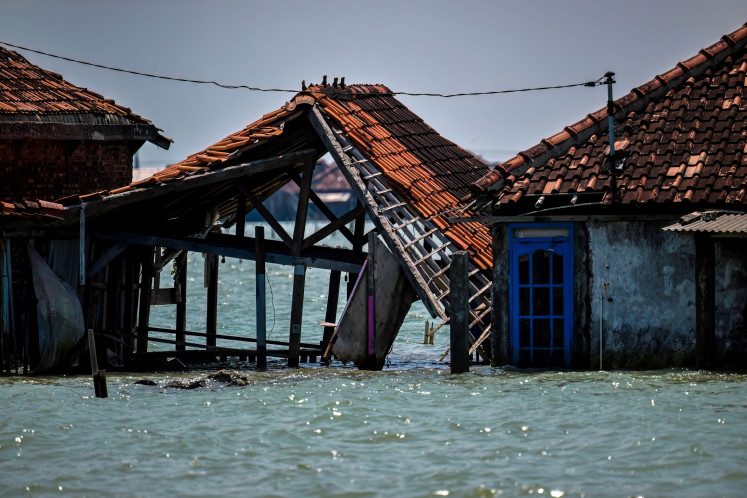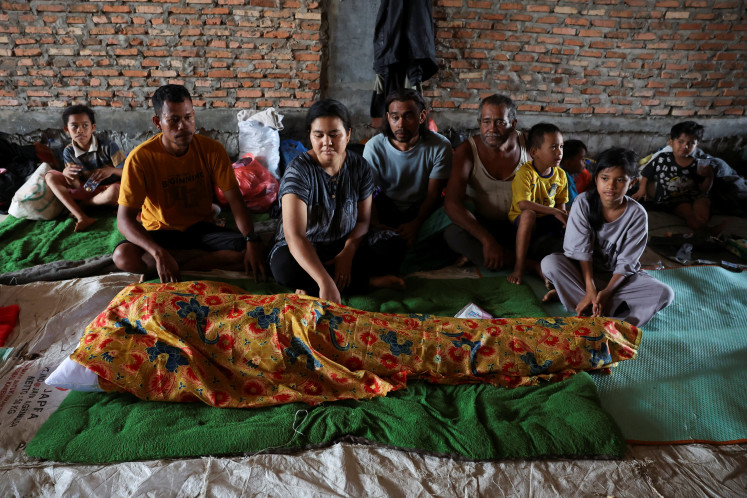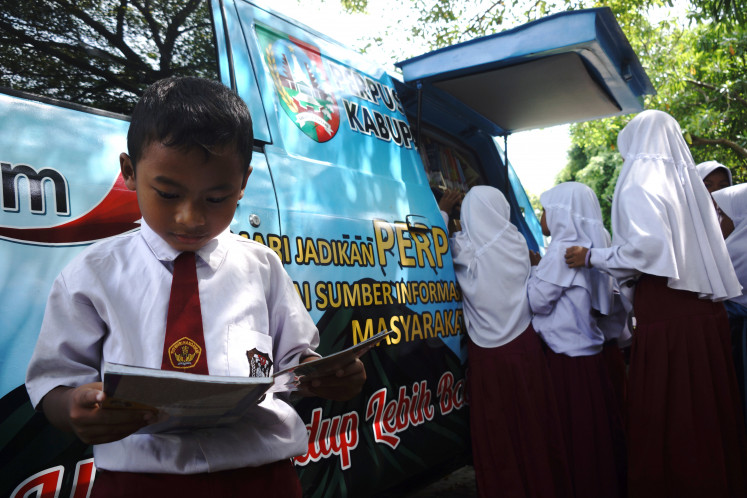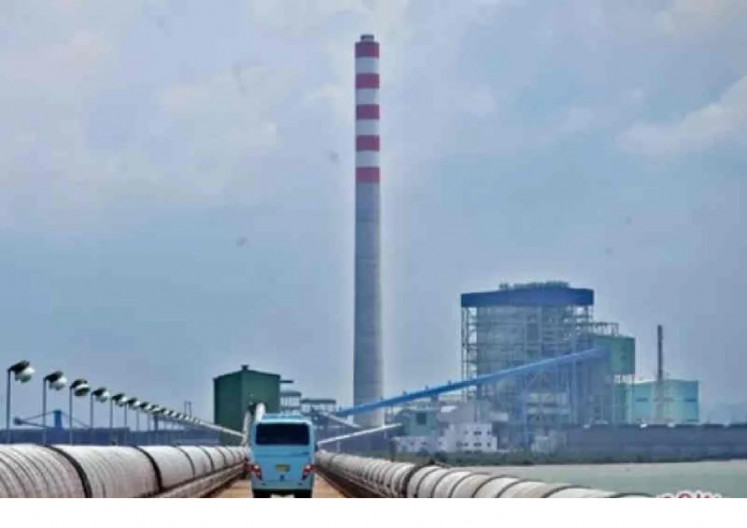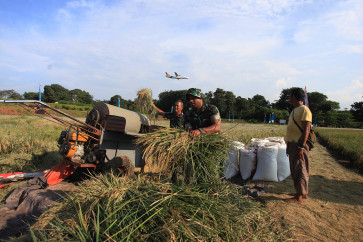Popular Reads
Top Results
Can't find what you're looking for?
View all search resultsPopular Reads
Top Results
Can't find what you're looking for?
View all search resultsFarmers barely heard amid the push for food self-sufficiency
For many of our farmers, agriculture still does not provide a dignified or dependable livelihood.
Change text size
Gift Premium Articles
to Anyone
F
ood self-sufficiency has long been a cornerstone of Indonesia’s agricultural development agenda. In recent years, that ambition has grown bolder, with the nation now aspiring to become a global food barn. President Prabowo Subianto has taken this vision even further, consistently framing food sovereignty not just as an economic goal, but as a strategic pillar of national security.
But behind this sweeping vision lies a sobering reality: For many of our farmers, agriculture still does not provide a dignified or dependable livelihood. If food self-sufficiency is to be meaningful, it must go hand-in-hand with improving the welfare of the very people who produce that food.
The 2024 Agricultural Economic Survey results, recently released by Statistics Indonesia (BPS), offer a glimpse into the structural constraints that farmers face nationwide. Among the most persistent are shrinking and degrading agricultural land, limited access to inputs, insufficient infrastructure, lack of capital, pest attacks/disease and natural factors due to increasingly erratic climate patterns.
Access to agricultural inputs stands out as one of the most pressing concerns. According to the survey, 46.39 percent of farmers reported difficulties in obtaining essential inputs such as seeds, fertilizers and equipment. The problem is especially severe in major food-producing provinces, including East Java (54.71 percent), West Java (47.84 percent), South Sumatra (57.91 percent) and South Sulawesi (56.94 percent). The key barriers were input scarcity (53.42 percent) and high prices (46.58 percent).
Meanwhile, 34.82 percent of farmers cited limited capital as a major challenge in farming. This is compounded by poor access to credit: 81.52 percent of farmers reported not using or lacking access to credit services. The main hurdles include a lack of knowledge about procedures, complex requirements, the absence of collateral and high interest rates.
Compounding the problem is the limited reach of government support. Only 30.53 percent of farmers reported receiving subsidized fertilizer. Seed assistance reached just 4.78 percent, support in the form of tools or equipment stood at 1.1 percent and access to financial aid remained limited, with only 0.51 percent benefiting from the Micro Business Assistance Program (BPUM) and 8.65 percent from Village Fund Direct Cash Assistance (BLT).
Climate-related risks are also taking a growing toll on agriculture. About 43.18 percent of farmers cited unfavorable natural conditions, made worse by climate change, as a major barrier to production. Pest attacks/disease remain widespread, reported by 55.03 percent of farmers, with even higher figures in key regions: West Java (64.62 percent), Central Java (62.12 percent) and South Sulawesi (62.89 percent).

